Finding Great Boondocking Spots

My name is Marshall, and I have a “problem.” I’m a serial boondocker.
I spend the vast majority of my time camping on public land, with most locations being free. The last time I stayed at a full-hookup RV spot was also the last time I stayed at a commercial RV park – over six years ago.
On the rare occasions I stay at campgrounds, they are public and offer few, if any, amenities.
The last time I stayed at a campground with any amenities was over 3 years ago at an Oregon state park. Since then, it’s been either boondocking or the (extremely) rare stay at a National Forest or BLM campground with zero amenities.
I don’t choose this style of camping because I have to. I do it because I want to! It fits my lifestyle much more than a crowded RV park.
Oh, and I’m rarely alone.
All this to say, I know a thing or two about how to find a boondocking spot.
But first, what in the heck is “boondocking”?
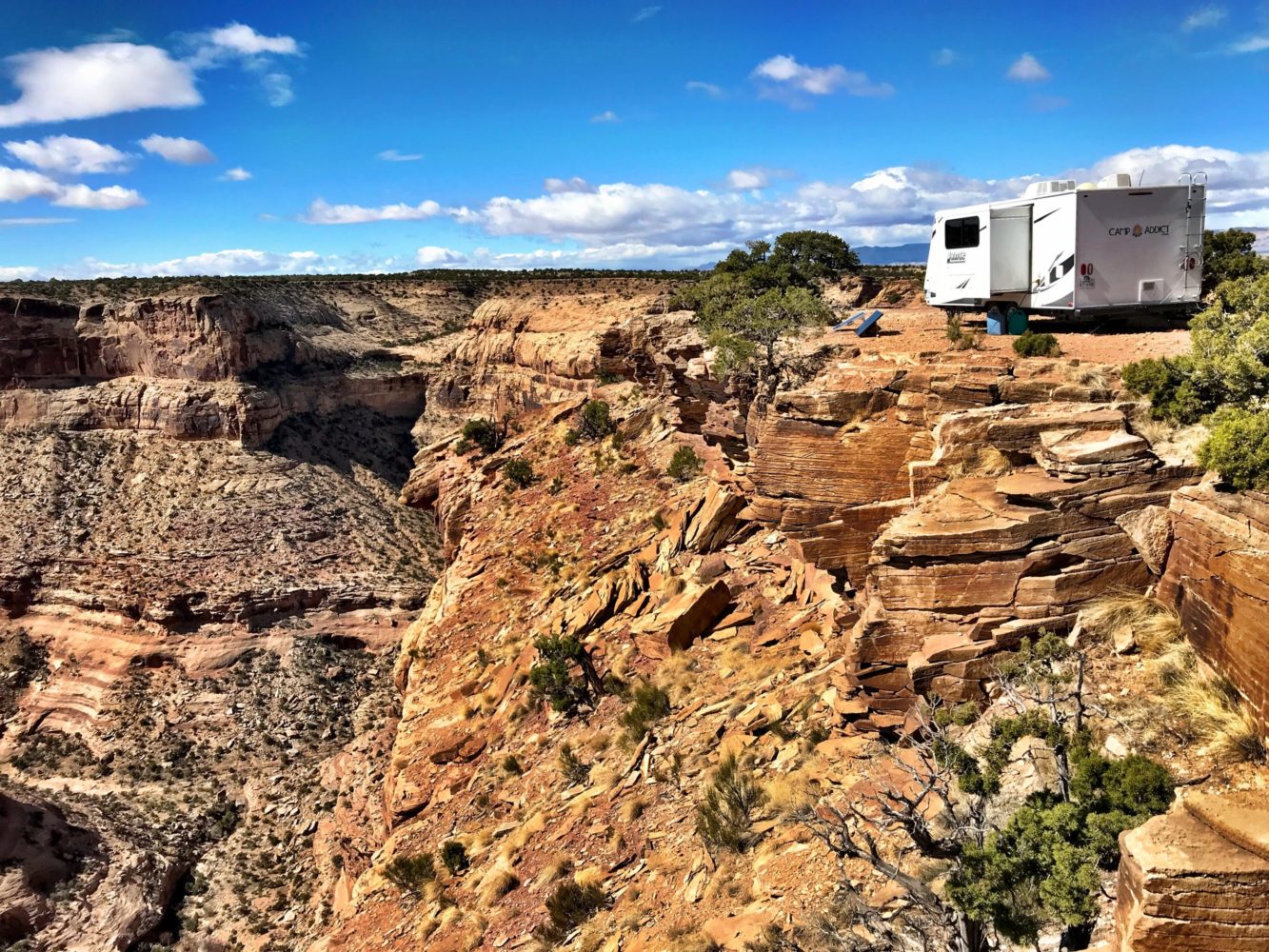
Defining Boondocking
Boondocking is camping at a site that has zero hookups. No water. No power. No sewer. And more often than not in an uncrowded spot on public land. Generally, for free. (OK, almost always free where I camp.)
Call it what you want – boondocking, dispersed camping, wild camping – it all usually means the same thing. Enjoying the wide-open spaces offered by the vast swaths of public land that the United States has to offer.
Where Can You Boondock?
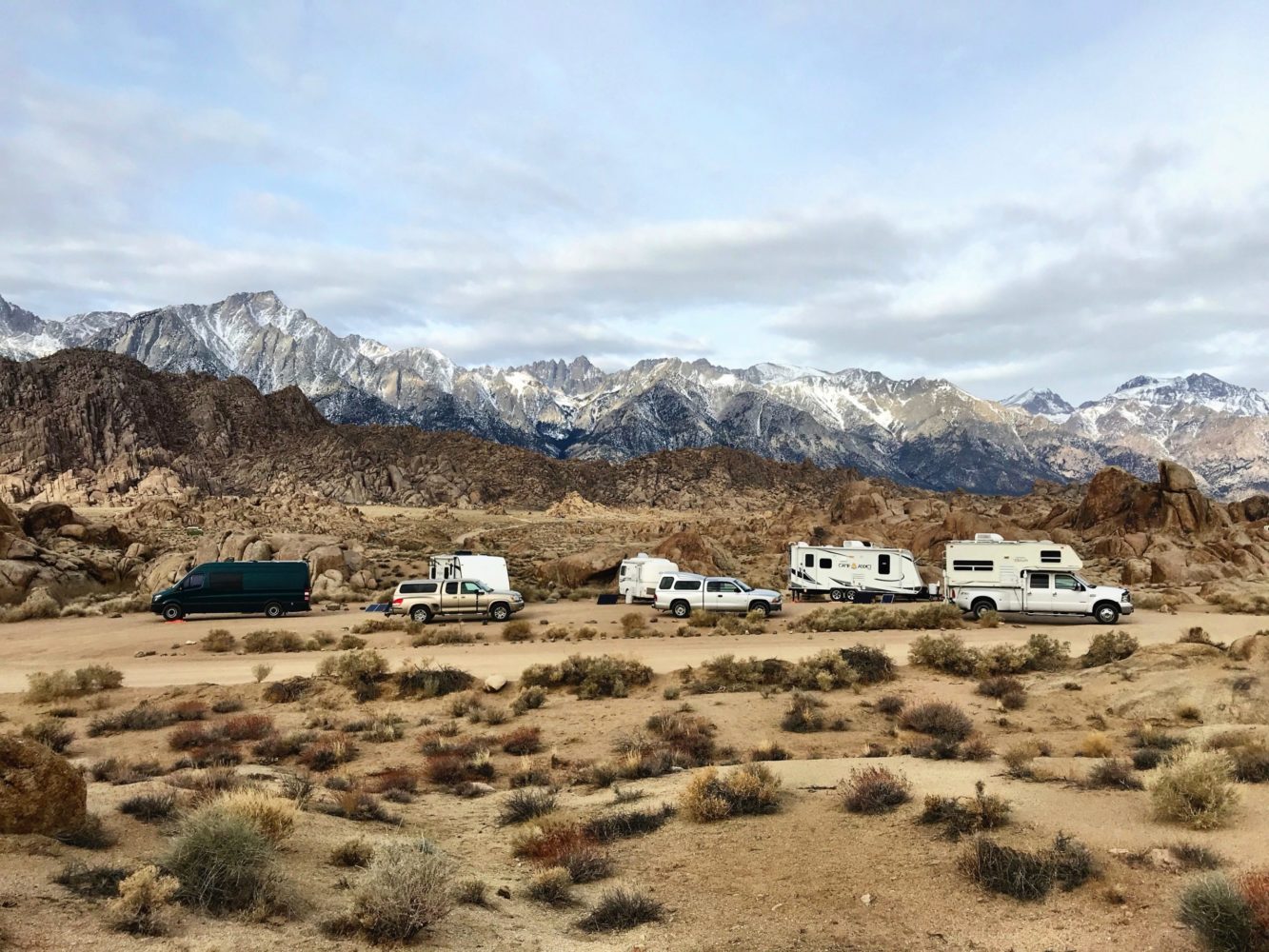
The most common place to boondock is on certain public lands. You can find the most availability of boondocking spots in the West because this is where the majority of the public lands lie.
There are four main types of public land that offer boondocking possibilities:
Bureau of Land Management (BLM) is in charge of the vast majority of public lands in the US. Here are some BLM quick stats:
- They manage 245 million acres (one-tenth of the US land), including 25 National Monuments and 21 National Conservation Areas
- Greater than 99% of BLM land is available for recreational use with no fees
US Forest Service (National Forests) administers the Nation’s forests. The Forest Service manages 193 million acres of land in 154 National Forests and 20 National Grasslands. Unless you are in a developed campground, it is generally free to camp on Forest Service land (where permitted).
State Lands which is just that – land owned and controlled by a particular state. Western states have a lot more of this publicly held land, frequently in the form of State Trust Land.
The availability of this land for boondocking will vary by state, and there is sometimes a fee to camp on this land. For example, Washington State requires a Discovery Pass ($30 annual fee). And Arizona requires a State Trust Land permit ($15 individual or $20 family annual fee).
City/County Land is the fourth type of public land and is the one that I use the least. This type of public land ranges from a gravel/dirt lot where you can camp to a city or county campground with or without amenities. The fancier the location, the more likely there will be a fee to camp, even if it is dry camping with no utilities.
Please keep in mind that while many different types (and locations) of public land allow public camping, this doesn’t mean that you can camp wherever you want on the land. It’s not a free-for-all out there! You need to follow the rules if you want public lands to remain open for your camping pleasure.
Rules of Boondocking
Public lands are not your private property. You cannot do whatever you want, whenever you want. Like it or not, there are camping rules even out in the middle of nowhere.
Each type of public land has its own rules, and each specific area may have additional restrictions. For example, one National Forest may impose shorter stay limits (typically 14 to 16 days, but some popular regions will have as low as 3-day stay limits).
Many boondocking areas, especially the more popular ones, have posted rules that you should read. Otherwise, you may get a door knock from a ranger who isn’t pleased with what you are doing.
Some generic boondocking rules include:
- Camp only where others have camped before. A good indication of this is a stone fire ring or other obvious signs of previous use. Don’t destroy a lovely pristine meadow that has never seen an RV before just because you like the view.
- Don’t tear up the area with your vehicles. I’m constantly amazed at the number of people who think it is their right to blaze a new path with their off-road vehicle. Sure, you’ve spent thousands of dollars on a toy or modifying your 4×4, but this doesn’t give you the right to tear up virgin soil. Use existing trails. There’s a reason they exist.
- Don’t stay longer than 14 days (if there is no posted stay limit). Two weeks is generally the longest you can stay in one place on any public land, and personally, for me is about the time when I’m ready to move on anyhow.
- Don’t be an obnoxious neighbor. While you may be the only one around for miles, it’s more likely that there are other RVs within shouting distance. Having nearby neighbors is particularly true in more popular destinations and as the RVing lifestyle explodes in popularity. Keep your noise pollution down (don’t have loud music, pets, kids, contractor generators, or other forms of long-term or disruptive noise). Don’t park on top of someone else. Don’t block someone’s view. Just be a good person (if you have to ask what that means, I don’t know what to tell you).
- Respect the wildlife. You are visiting their home. You are parking where they eat, sleep, and play. Don’t bother them. Don’t let your dogs run free and chase after every animal they see. And while we are on the subject, don’t let your dogs bother other campers. Nobody likes some random dog barking at them or peeing on your property. Not cool!
- Keep the area clean. Don’t litter and pack out what you pack in. And don’t be one of those that leave your toilet paper and human waste so others can “enjoy” it. You have no idea how much trash I’ve hauled out of public places, both on my own and with other Xscapers, during official and unofficial cleanups which are often needed, unfortunately.
It boils down to being a good person and using common sense. Unfortunately, there are too many people camping that seem to lack either of these skills.
If we don’t respect the public lands we are fortunate enough to access, the controlling authority will shut down these camping areas. Some popular sites have already been shut down, while others are being converted into designated camping areas (some requiring permits to camp now).
The Escapees organization (parent to the Xscapers) created a Boondocking Policy a couple of years ago after some of us noticed an uptick in people behaving badly while camping on public lands.
Read the policy to ensure you are a good boondocking RVer. The policy covers much of what I did, but reading some of this stuff more than once is never a bad idea.
I’ll now climb off my soapbox and discuss a bit about how you go about finding these excellent boondocking spots.
How Do You Find Boondocking Locations?
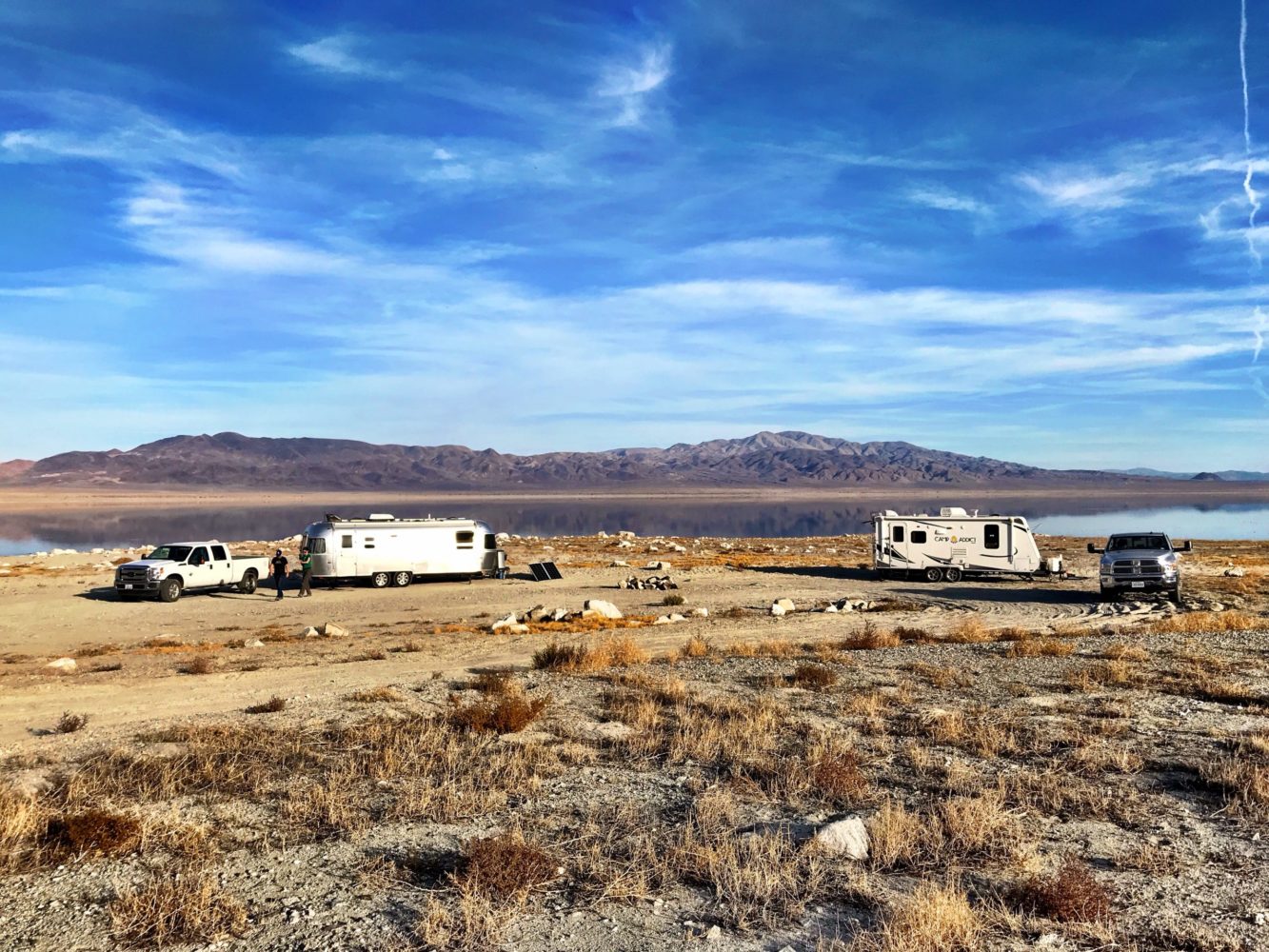
There are three ways I find boondocking spots, with two being my primary means:
- Online with campground location websites
- Via word of mouth from my friends and acquaintances who also boondock
- On my own using public land maps, Google Maps satellite view, and getting out and exploring
Websites
There are many different online destinations you can use to find camping spots, including boondocking locations. However, the quality varies widely, so I use a total of two.
Campendium is my first choice when it comes to finding places to camp. It has a variety of filters that allow you to quickly drill down to find the type of location you need. The user-generated reviews give you a real-world perspective of what to expect. It offers free searches, or you can become a member to access more dialed-in search features.
Free Campsites is a distant second, and to be honest, a website that I don’t visit that often. Why? It’s just a more complicated website to use. Not as visually pleasing and often includes reviews from tent and car campers, so the information usually doesn’t pertain to people with rigs.
While the above two websites are free to use, there are two paid options that you might wish to consider and that I have used.
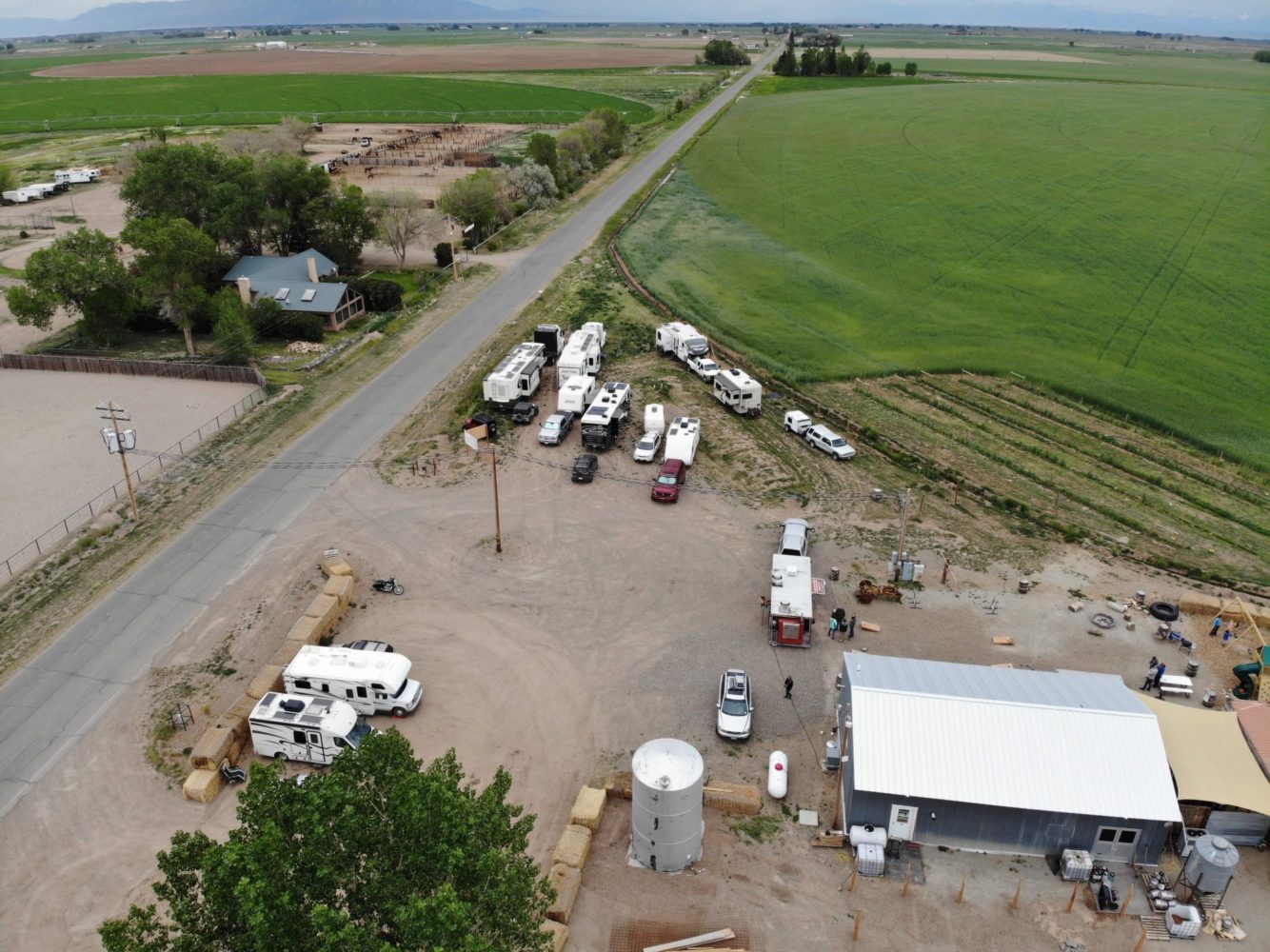
Boondockers Welcome is a paid service ($50 a year) that gives you access to over 2,000 locations that allow you to camp for at least one night for free. These hosts are private individuals with either a large driveway or a piece of land suitable to park at least one RV. While the majority of hosts are US-based, there are many in Canada and even some overseas.
Harvest Hosts works very similarly to Boondockers Welcome but features 900+ farms, wineries, breweries, and museums that allow you to overnight. They charge a $79 annual fee and offer an upgrade to include 350+ golf courses. With Harvest Hosts, you are encouraged to patronize the establishment, so the ‘free’ stay often costs a bit, but you will get a great experience staying at some incredible locations.
Either Boondockers Welcome, or Harvest Hosts is a great way to try out boondocking without having to commit to finding a location that works for your sized RV. You eliminate things such as knowing where you can park your rig and where you can’t and being freaked out about camping out in the boonies all alone (though there isn’t much to be concerned about).
These “boondocking” options can allow you to try camping without being plugged into utilities without any of the other hassles of boondocking. It’s an easy way to find out if the boondocking lifestyle is right for you!
Word of Mouth
I have a lot of RVing friends who boondock so it is fairly common that cool spots come up in conversation. When one grabs my interest, I will favorite it on Campendium or save it as a “want to visit” pin in Google Maps.
Keep your ears open when you talk to fellow RVers. While they may not tell you about their secret hiding spot nobody else knows about, they often have no problem telling you about better-known places they love. And with thousands of potential boondocking spots, it’s always nice to have some help narrowing down your choices.
On Your Own
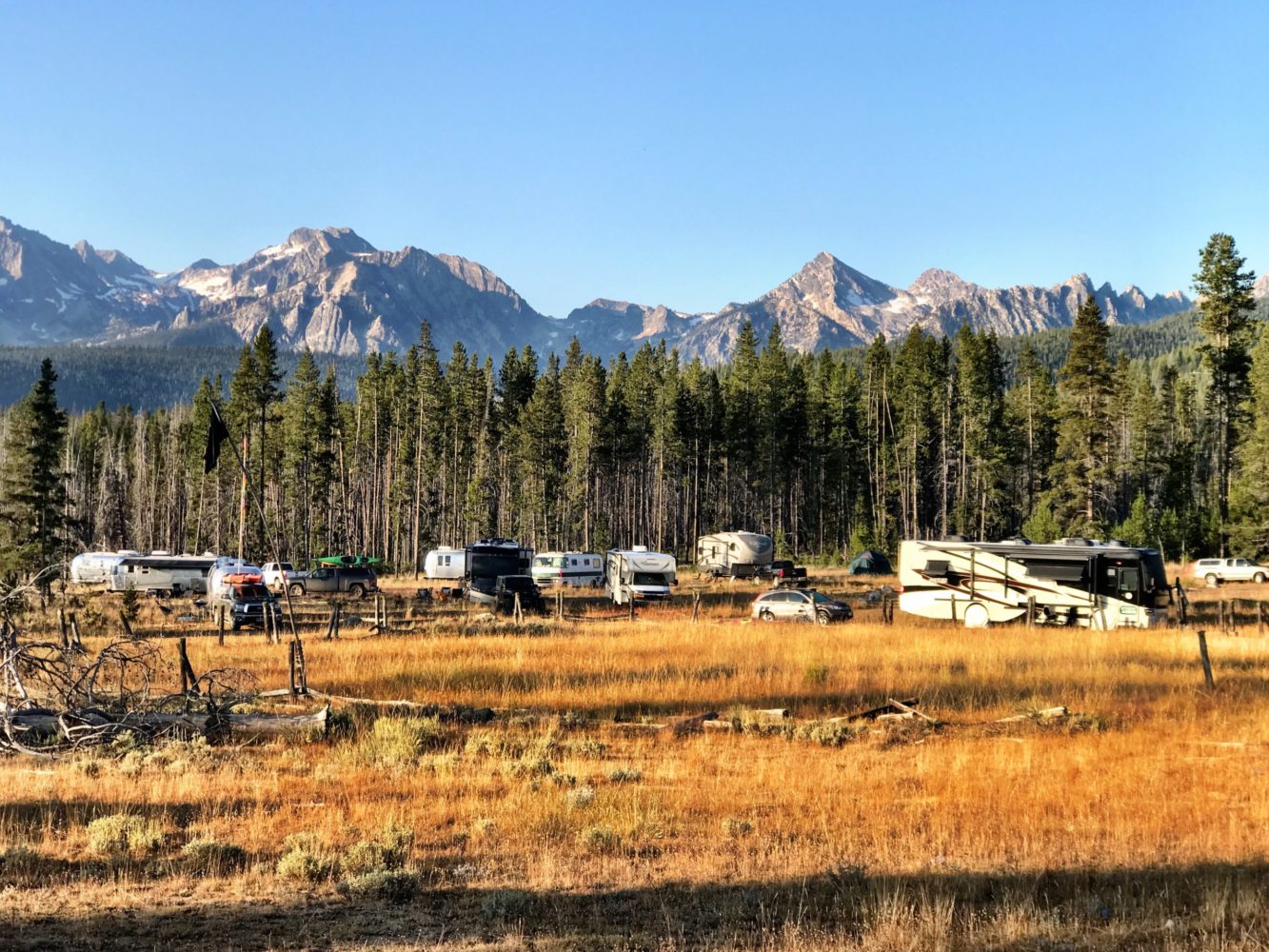
The final method I use to find dispersed camping locations is simply by exploring areas on my own. I don’t do this much as it requires being within a reasonable driving distance of an area I want to explore, and when I am somewhere it means I already have a place to stay.
But I have had very good success using this method in the past. For example, I found a not well-known place in Idaho for a group of 15 rigs to enjoy the 2017 solar eclipse in the path of totality.
To use this method, you must first know where public land is, and if you can camp there. I’ve only done this in National Forests because the US Forest Service makes it very easy to locate where you can and cannot legally camp.
National Forests put out Motor Vehicle Use Maps that indicate where on Forest Service Roads you are allowed to camp. I use this as a starting point, then fire up the satellite view in Google Maps to get a sense of the area.
I’ll look for obvious camping spots and the general lay of the land. The downside of this is that you cannot tell the condition of the road and if a rig can go down it. That’s where getting out and exploring comes in.
You have to physically drive (not in your RV or towing your trailer!) these potential spots to see if your rig can make it down the road and if there is indeed a suitable camping spot.
Be prepared to spend some time doing this. To find the eclipse viewing location, I drove for hours before almost giving up. The last place I checked was THE spot.
Because of the effort involved, and the fact that I would have to be in the area to investigate, I only use this method a few times a year.
Boondocking: Just Do It!
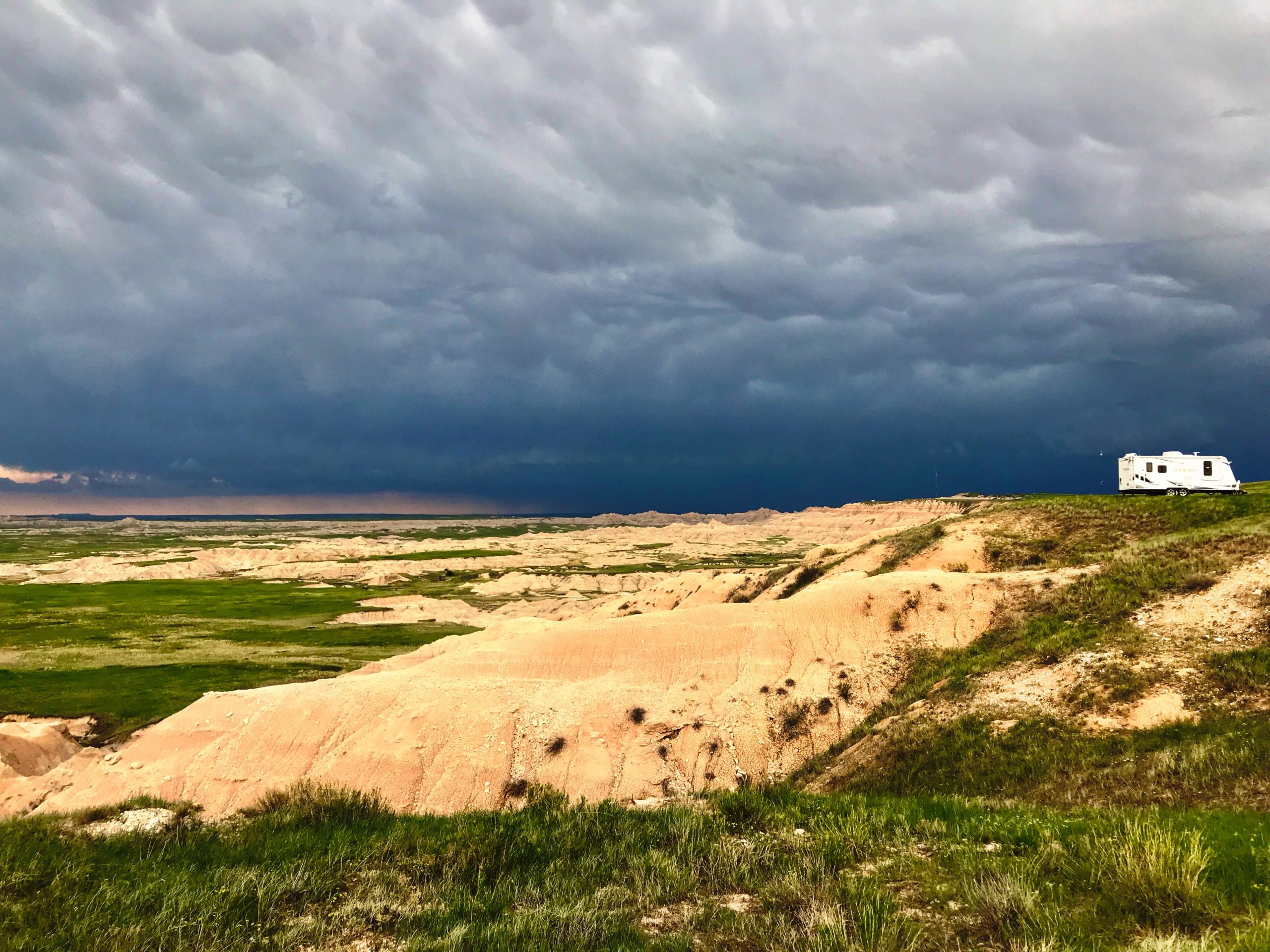
Hopefully, this has given you an idea of how to find boondocking spots. If you are out West, there is an abundance of places you can camp for free. Out East, pickings are slim, but they exist.
Use one of the above resources and find a spot to enjoy the freedom of not being in a developed campground. You can thank me later.
Just remember that it is up to each of us that boondock on public lands to ensure that we retain this privilege for years to come.
Treat the land properly, and we all will be able to use it for generations to come.
Treat the land like many (unfortunately) do, and we will all end up being sardines in campgrounds as the only camping option as public lands are closed to camping.
Get out there and enjoy some insanely beautiful boondocking spots that cost you nothing other than a bit of care in the way you treat it. You may become like me and never want to pull into a traditional campground again.

Author
Marshall Wendler
Marshall is the co-founder of Camp Addict, the RV newbie website. He RVed full-time for close to 7 years and now enjoys the lifestyle part-time, always looking for that next great boondocking spot.
Pin this post to Pinterest!
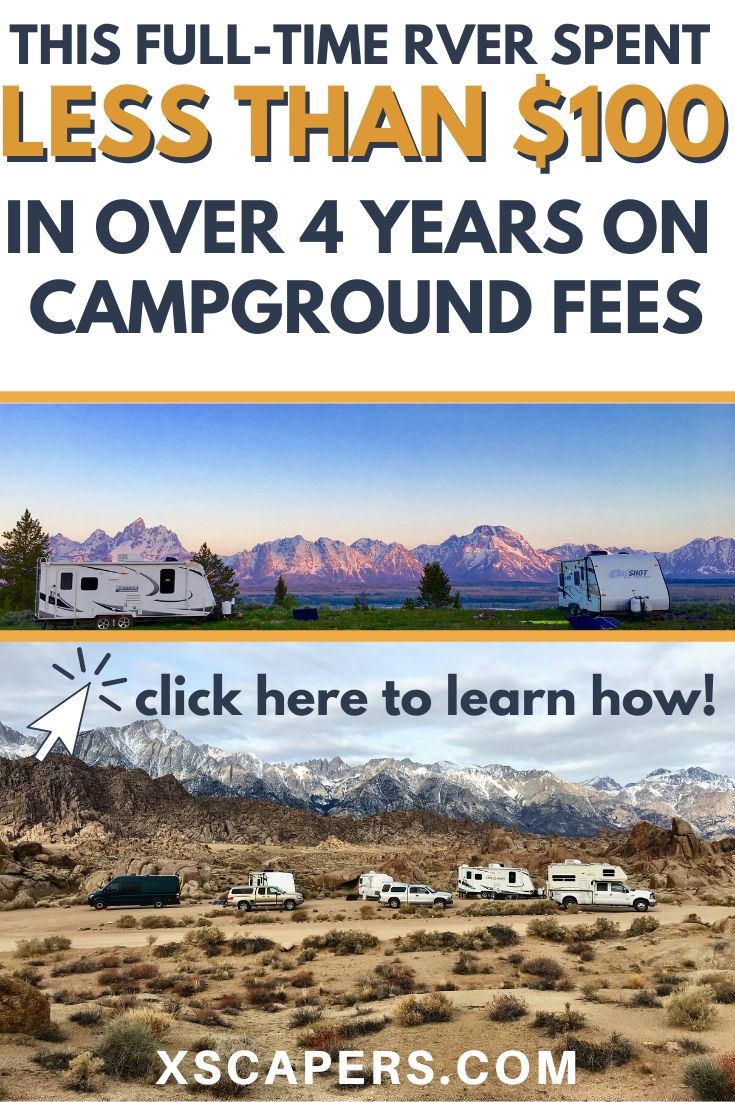

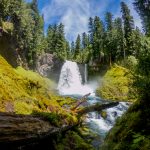 Previous Post
Previous Post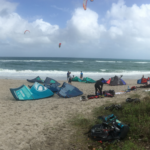 Next Post
Next Post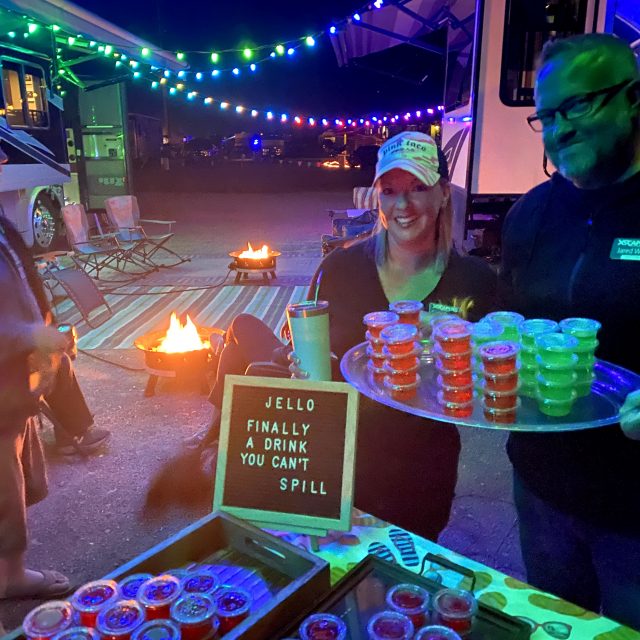
Enjoyed your article, Have only boondocked once but did enjoy it. Reading your article certainly gave me something to think about.
Nice to hear that this blog post caused the gears to start turning! I think boondocking is great (obviously) so I’m glad that you had a good first experience.
this was a nice read with coffee. thanks marshall!
Glad you liked it, Joe!
Great Article!
We really enjoy boondocking also.
My wife and I spent 6 weeks in Canada exploring Nova Scotia, New Brunswick and Prince Edward Island. Only stopping in a Campground for 2 days while meandering the real countryside of these Maritime Provinces.
Free camping was abundant.
Thanks for your info. ?
You are most welcome, Joe.
Glad to hear that free camping is easily had in the Maritimes. I’d love to explore that part of the world someday…
Love to read about boondocking. My wife and I recently took 13 weeks to get from Oregon to Florida in our Class A motorhome, dry-camped all the way. (Some of it was in developed campgrounds, but with no hookups.)
Carl & Marty Turner
Hey Joe,
13 weeks sounds like a nice travel pace to get cross country!
The last couple of campground experiences I’ve had are all dry-camping. Usually that is a better experience then being jammed into a typical RV park, IMHO.
A kindred spirit! I have pursued this lifestyle since 1986, a year after we went full time. Maybe earlier, as we spent a half month vacation in 1982 in a fifth wheel and paid a total of $78 in campground/RV park fees, including several nights in a resort. We have spent whole winters in the desert, got in to a pattern of dumping and filling every two weeks. Usually there were other rigs in sight, sometimes we visit with some of them, and have made new friends there. We can’t imagine living any other way. And Day’s End helps us find a “home” when we travel. Enjoy the lifestyle!
SKP 4245
Hi Judy,
I’ve already blown the camping budget this year, spending almost $100 so far. Most of that was for 4 nights of dry-camping (at $20 a pop) where I didn’t have any real close neighbors, so it was just like boondocking. Except I paid for the privilege. Yay?
I really only use Campendium as my boondocking location source. I find it really simple to open up their iOS app and find a place. I’ve never used the Day’s End directory.
Thanks for reading!
Great review Marshal! I’ve been boondocking for over 40 years (but I’m not a full-timer) with several hundred thousand miles of travel. I even found a spot in Anaheim near Disneyland despite a local law against RV parking on the street (I used a street location that was a county island in town).
You left out an important option, private land. This is a real option, especially in urban areas. Many land owners have no objection to someone parking an RV for a night or two. I try to get the owner’s permission if possible but many locations involve large areas where the owner is nowhere around such as open lots, large business parking lots, etc. These are especially useful when passing through an area for a brief one night stopover. These even provide an option in areas where laws against RV parking exist. In most of the west, the police have no jurisdiction on private property. My preference is always to be out on our own in the back country, but we need this option quite frequently as well.
See you on the road!
Frank, Gilbert, AZ
Hey Frank,
I did mention Boondockers Welcome, which is an online directory of private land where you can camp for a night or two. This is the easiest way to find a place to stay on private property. It eliminates the issue of having to find who owns the land and asking for permission.
While it may be true that law enforcement has no jurisdiction on public land, they sure do if it’s a city/county ordinance stating you cannot occupy a recreational vehicle.
And don’t forget the pesky HOA’s. Being from Gilbert, you are well aware of the ‘joys’ of those, even if you don’t live in one. The Phoenix Metro Area is overrun with them. I used to have the ‘pleasure’ of living in one in Glendale. Yeah, I won’t do that again…
Thanks for the comment and enjoy your travels!
I currently volunteer at a U.S. Army Corps of Engineers lake (Belton, TX), where I provide information on “America the Beautiful” passes. These federal passes are a terrific bargain — free to all disabled citizens, current military, as well as to all 4th grade students. Non-disabled seniors can purchase a lifetime access card for a one-time fee of $80. Passes waive Entrance or discount Standard Amenity Fees charged at certain locations. At USACE lakes, the entrance fee is waived and campsites are half price. You can check out the following federal agencies for more information at these websites:
* Bureau of Land Management
http://www.blm.gov
*Bureau of Reclamation
http://www.usbr.gov
*Fish and Wildlife Service
http://www.fws.gov
*USDA Forest Service
http://www.http://fs.fed.us
*National Park Service
http://www. nps.gov
*US Corps of Engineers
http://www usace.army.mil
In addition, the Tennessee Valley Authority may honor the Access Pass for entrance or camping discounts.
P.S. At Corps lakes, you get free hookups for volunteering 20-25 hours per week — a sweet deal!
Hi Nancy,
Yes, we LOVE the America the Beautiful pass!
Both Kelly (my business/travel partner) and I have one and we make extensive use of it. I’m certain that all of our full-time traveling friends have them as well.
While we mainly use them to enter National Parks and other sites that require them, we do occasionally use them for camping. One recent example is when a large group of us stayed just outside Las Vegas in the Lake Mead National Recreation Area. It’s free to camp there for 14 days on the BLM land, but you have to have a pass to enter the area.
Thanks for the information and thanks for volunteering!
I’m very curious if you’ve also posted an article listing the equipment you feel is practical and reasonable to live for 4 years as you have.
We loved boondocking before our health slowed us down but right now we are putting the rig back on the road. We have lost touch with the latest items that make things easier.
Now we have inverter with solars, genny, 38 ft moho.
Any ideas?